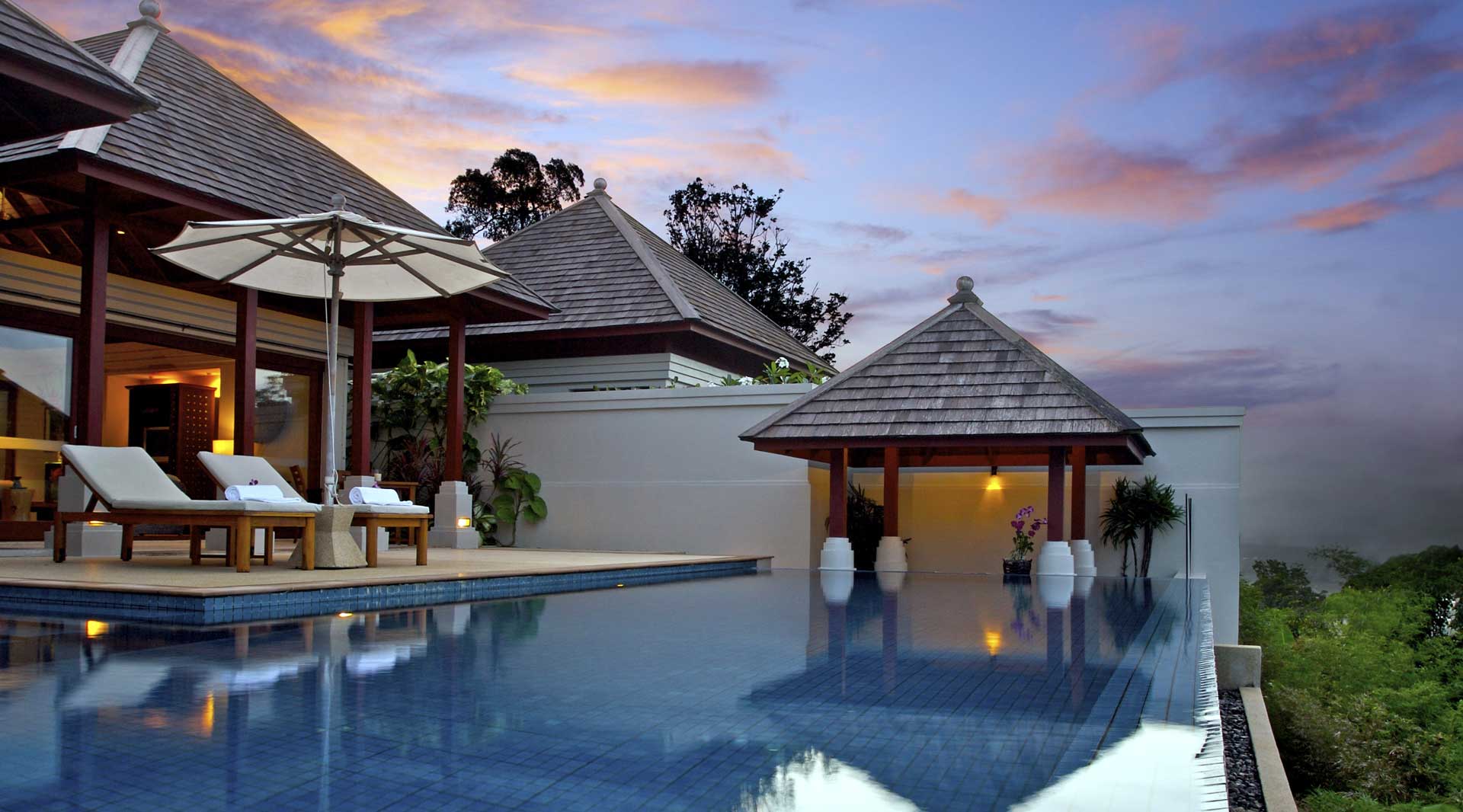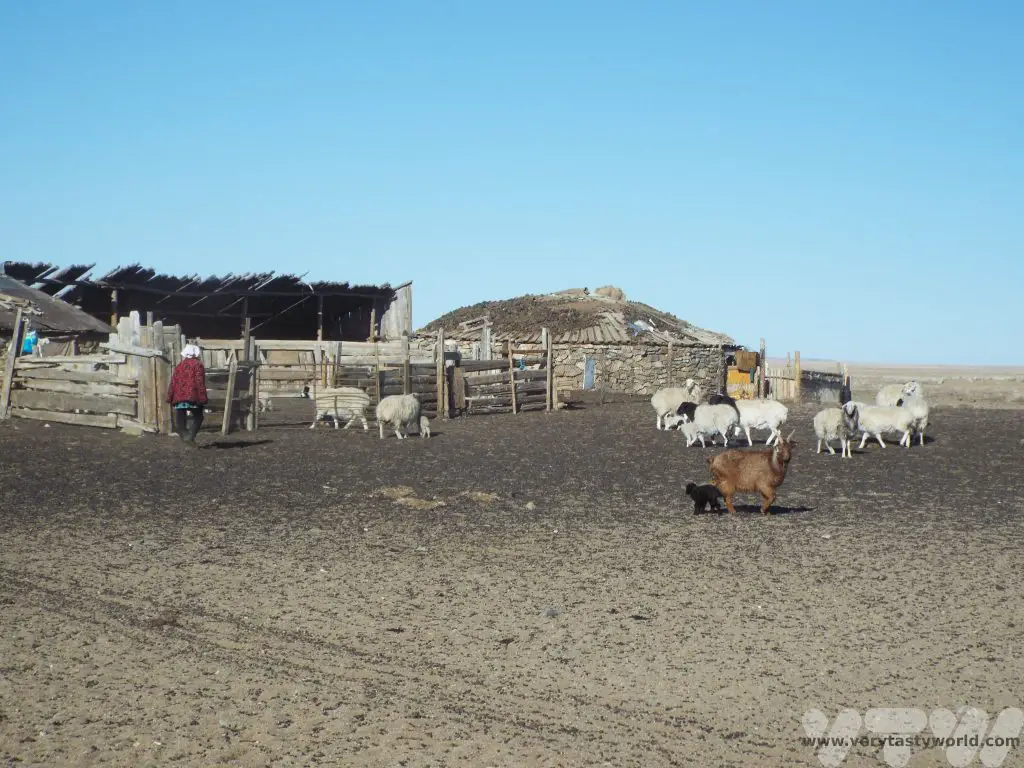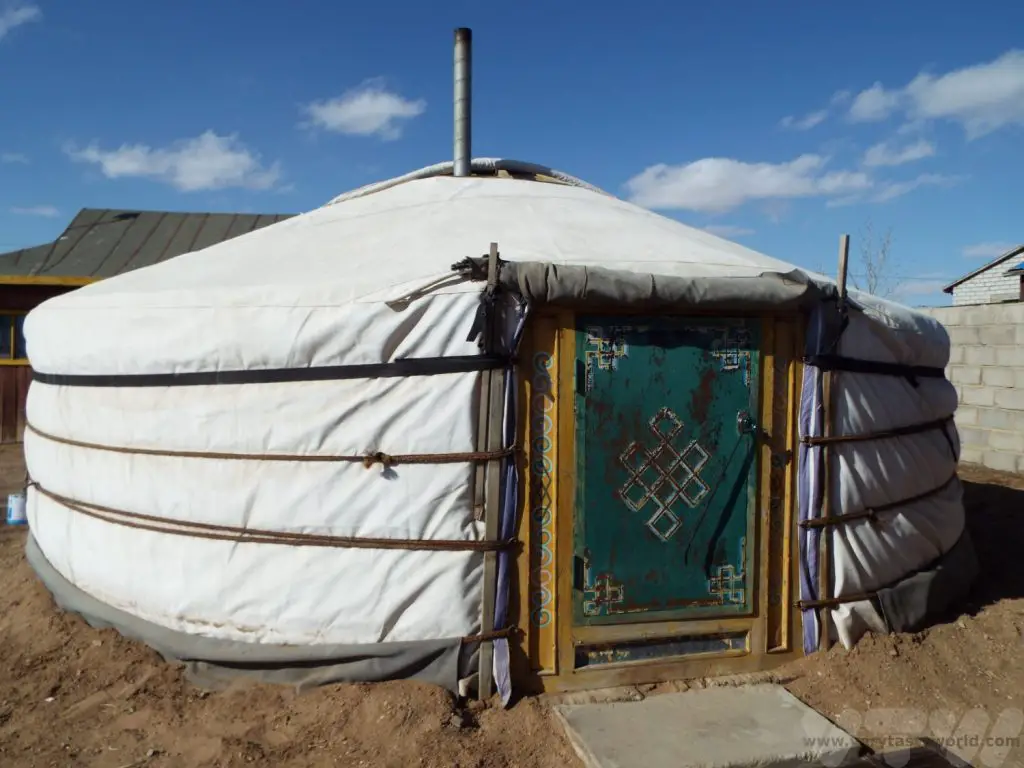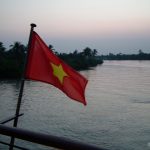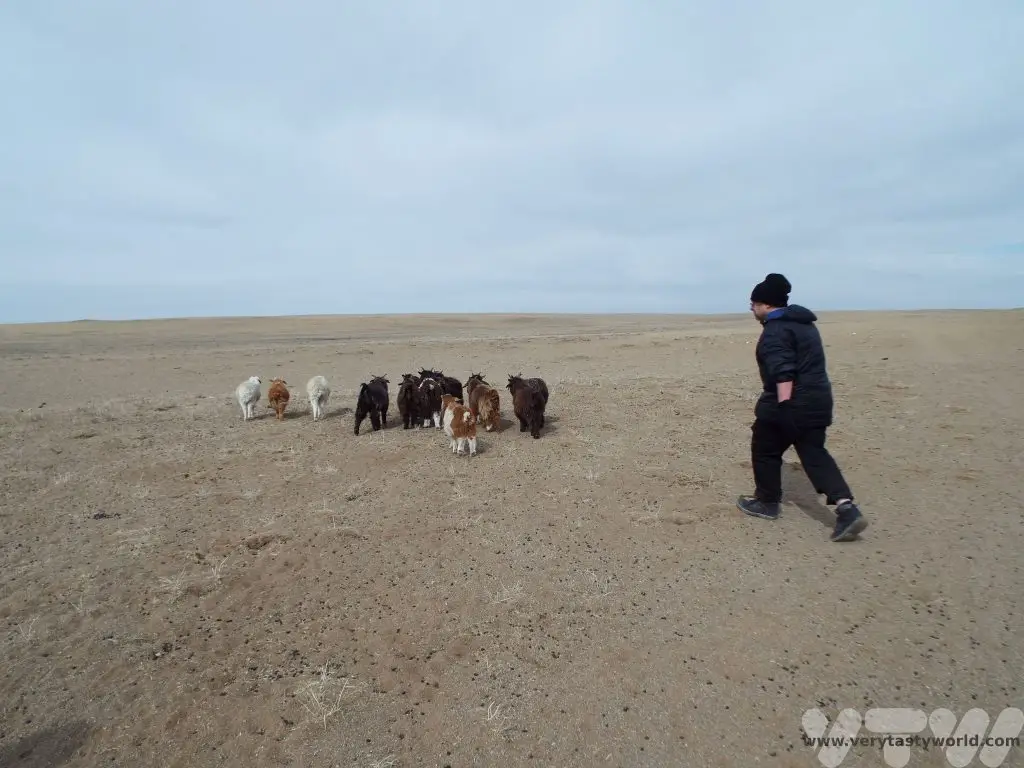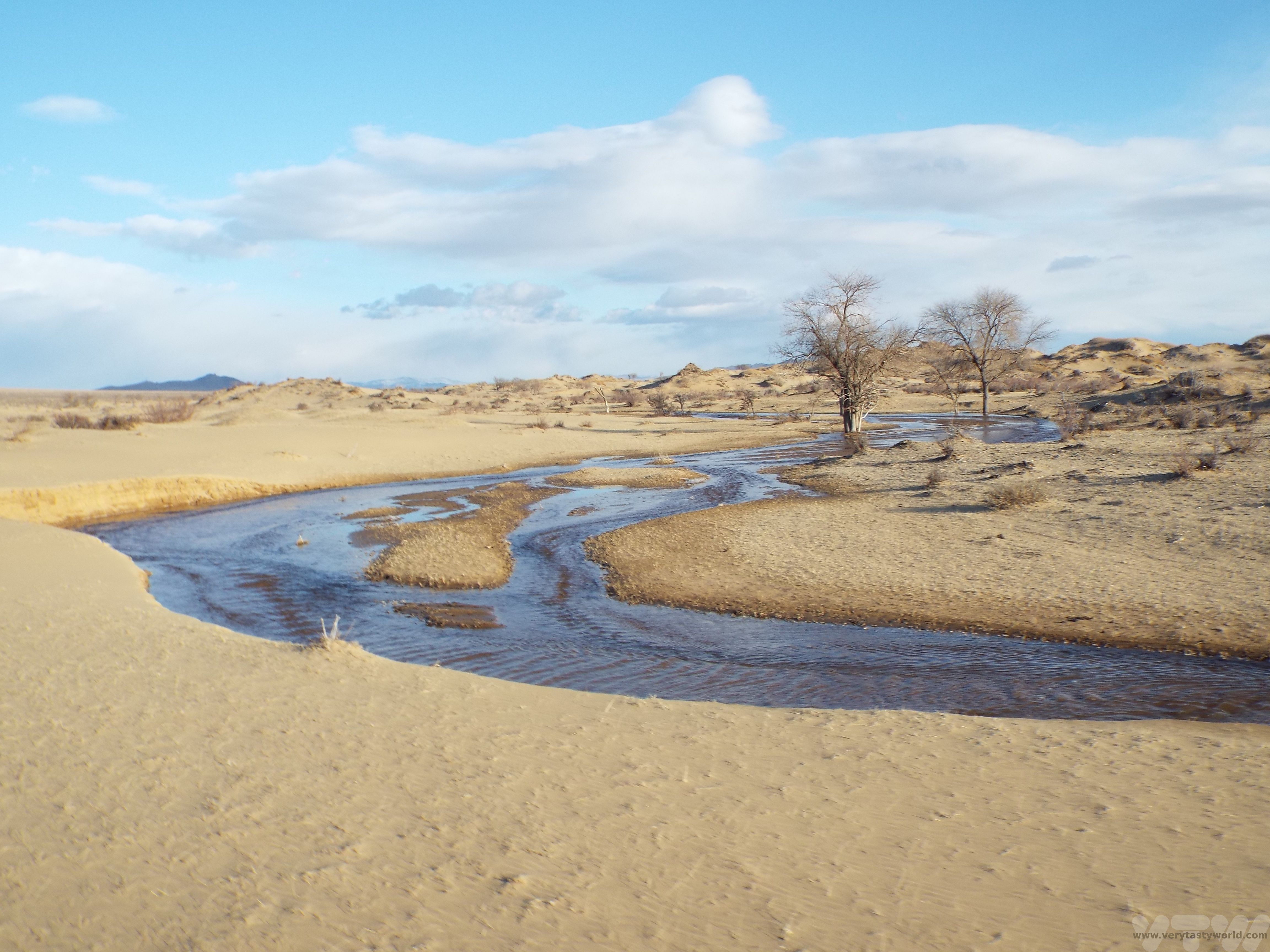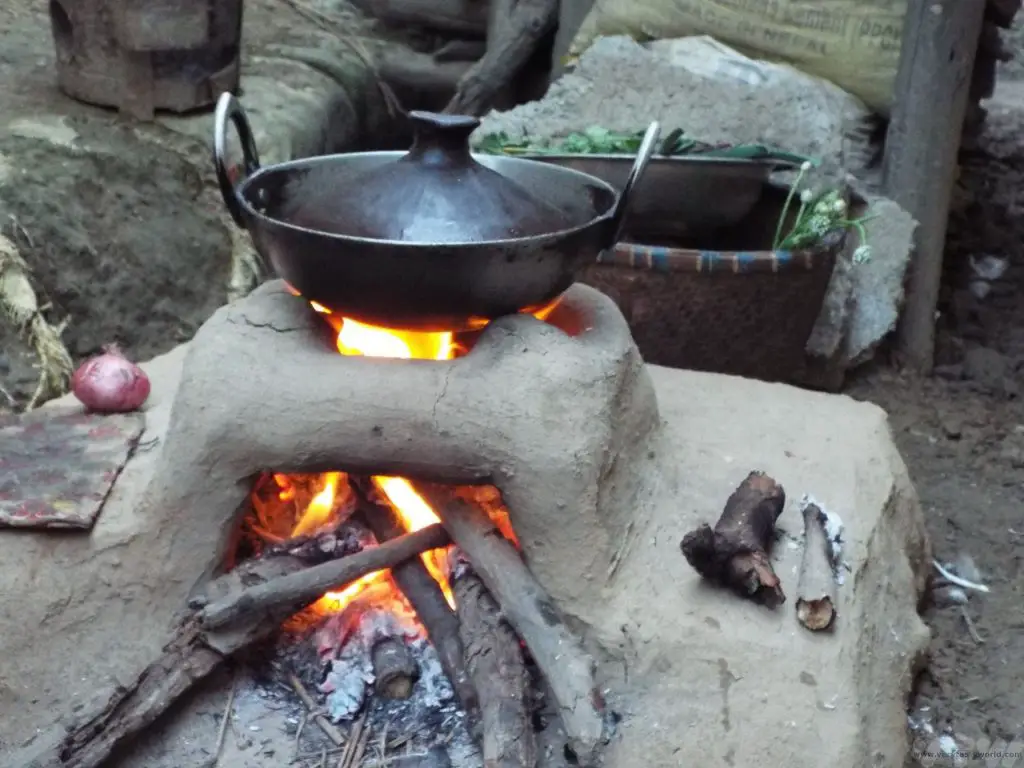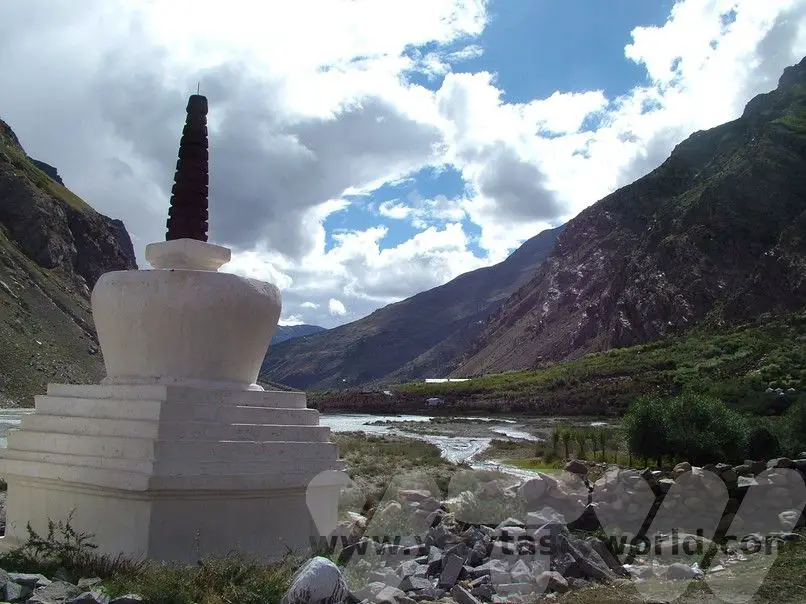Home » Posts tagged 'Gobi desert'
Tag Archives: Gobi desert
Showers? Where We’re Going We Don’t Need Showers… Adventures in Washing in Mongolia
Mongolia is the place to have adventures: to go far, far off the beaten track, see marvellous landscapes, meet wonderful people and, in some ways, to challenge yourself. Washing and taking a shower in Mongolia is a very different experience to normal washing in our home country.
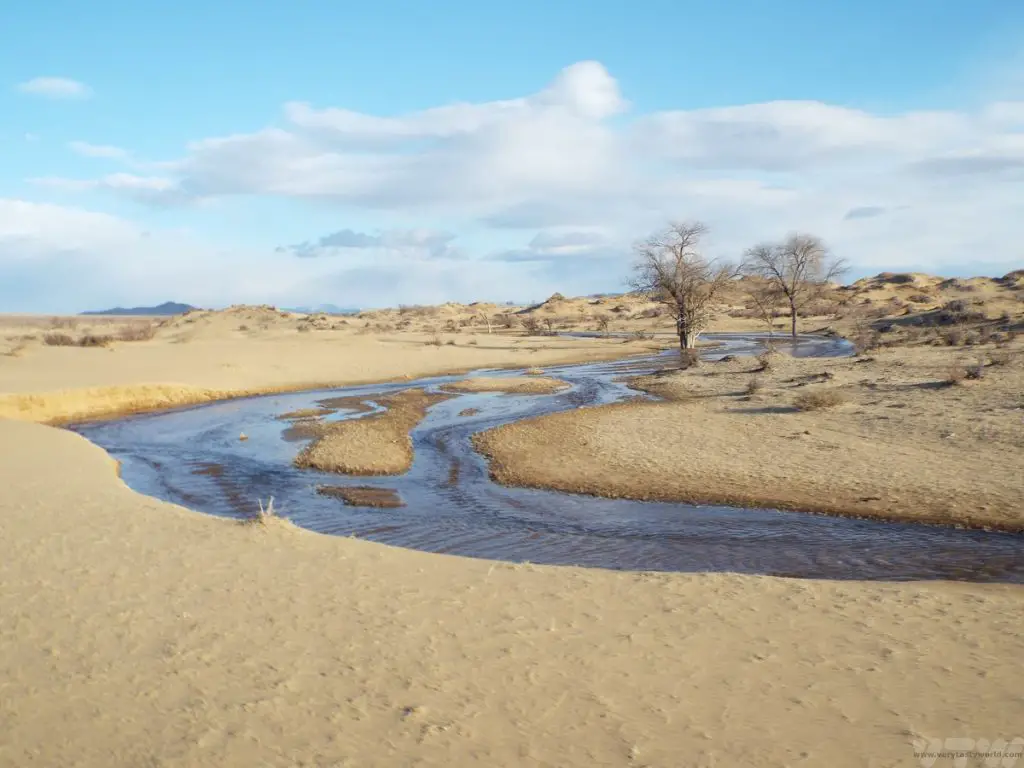
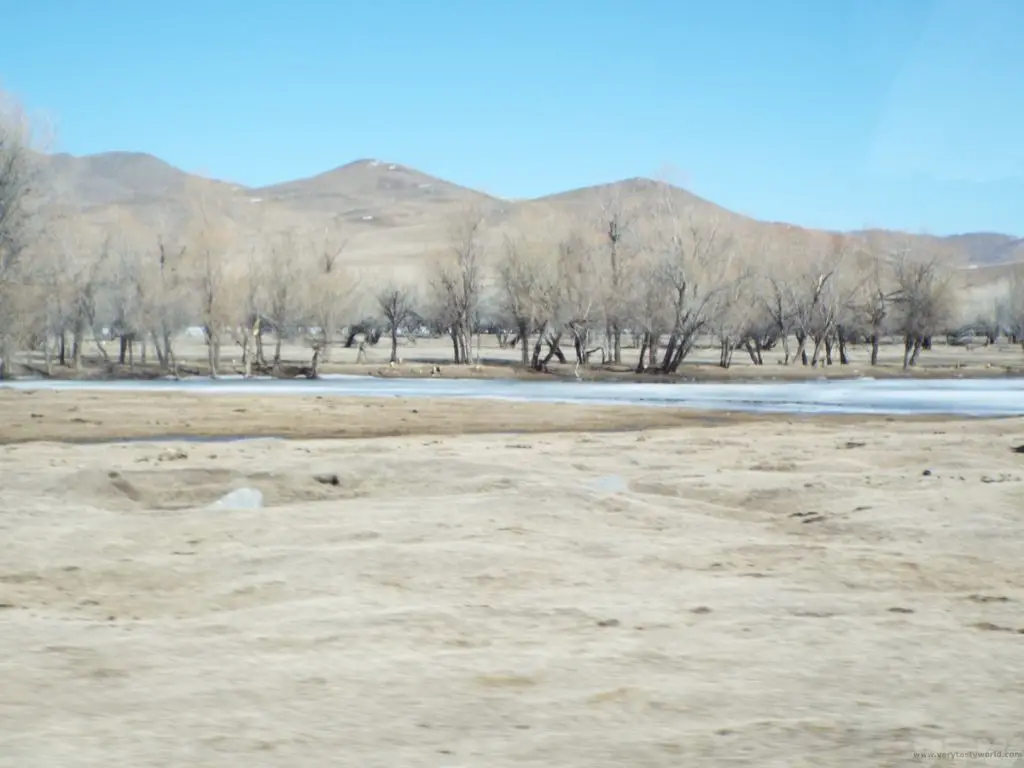
We’ve never particularly been interested in luxurious travel – we feel a bit uncomfortable about having our bags carried for us and we really don’t need lashings of extras in our accommodation – a bed and a bathroom will be just fine. We were quite surprised on a recent trip where we got upgraded from a 3 star to a 4 star hotel in the UK that the difference between these levels of comfort really boiled down to a trouser press and significantly more useless cushions (which all needed to be discarded before trying to sleep) on the bed to make it appear more inviting.
We’ve been lucky to have travelled to many places all over the world. It was on a trip to Bulgaria many years ago that we first learned that some countries don’t have the drainage infrastructure to allow you to place waste toilet paper into the toilet itself so you have to use a bin instead. This really made us think about how we live and helped us realise how lucky we are that we live in such comfort – where we can flush a toilet, or wash ourselves simply by turning on a tap.
Staying In The Gobi
We knew that when we were staying in gers (the Mongolian name for yurts) with nomads in the middle of the Gobi desert a beautifully plumbed-in bathroom was not going to be available. In the middle of a vast desert it is obvious that there is no running water except in some of the larger towns where it would be possible to get a shower in Mongolia.
We were very aware that when we booked our trip, we were going to have to get used to not showering every day and also that the toilet arrangements would largely involve squatting over a hole in the ground. This was the loo in the Gobi.
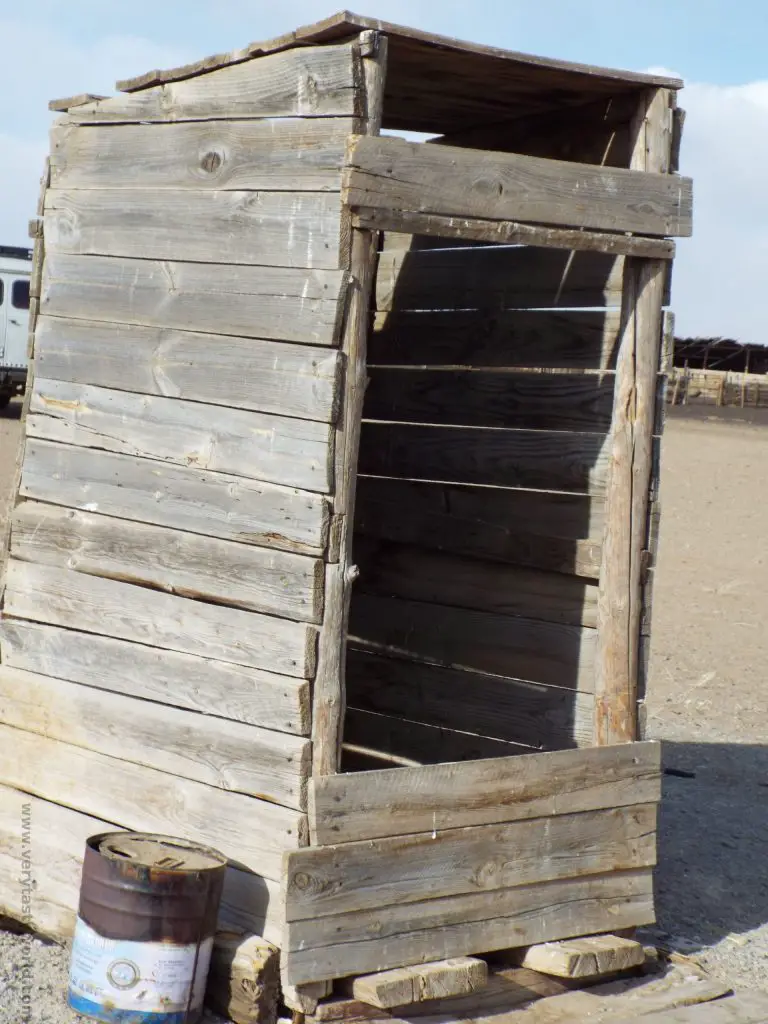
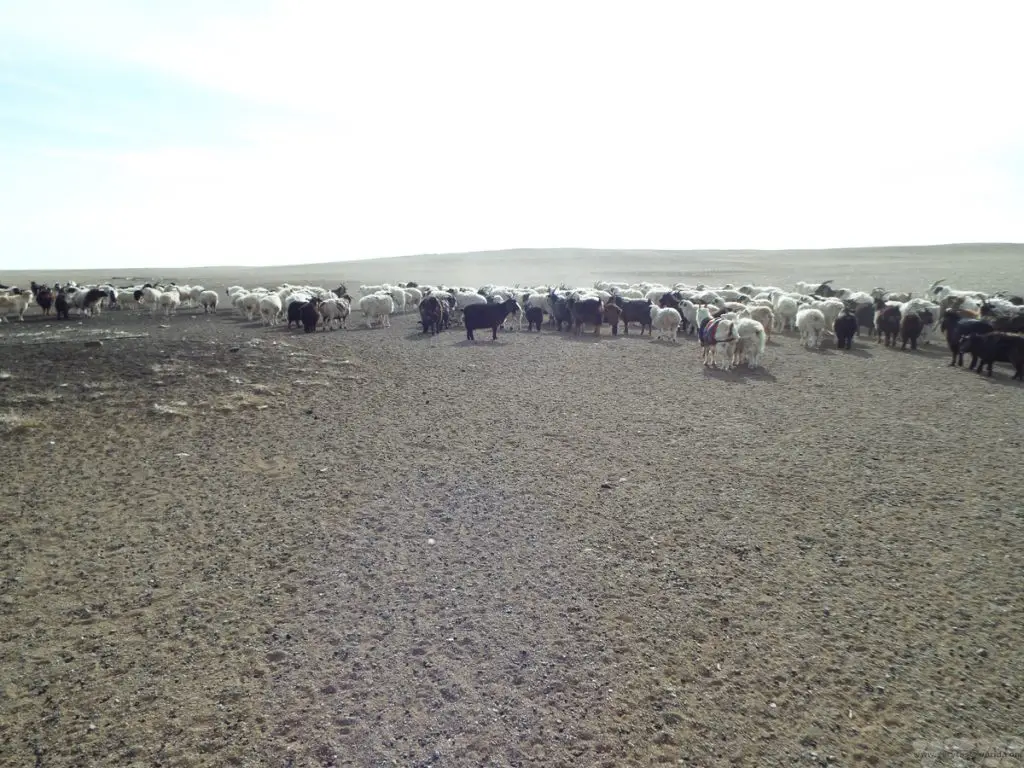
It had a good view, though.
In the Gobi people use a well to obtain water.
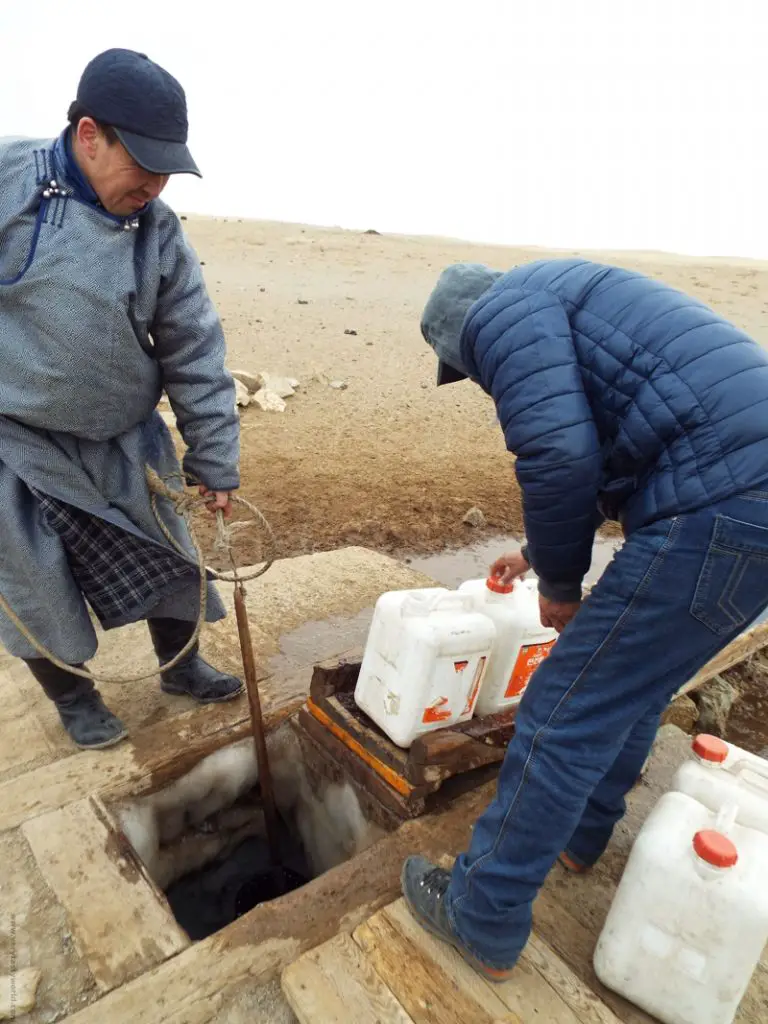
Sleeping In A Ger
You are always conscious of how precious a resource water is. You don’t waste it. Whether we were staying with families who had kindly shared their homes with us or in ger camps, water was always available, but it was finite, stored in a barrel in the kitchen area. There is a wash area to the right side of the door and many gers have a little water container located above a sink area which has a tap. You run it for a minimal time to get just enough water to wash your hands or clean your teeth. In tourist ger camps, there wasn’t always a basin inside but there was often an outside communal area where a sink had been set up between the gers where it was possible to have a quick wash/teeth clean.
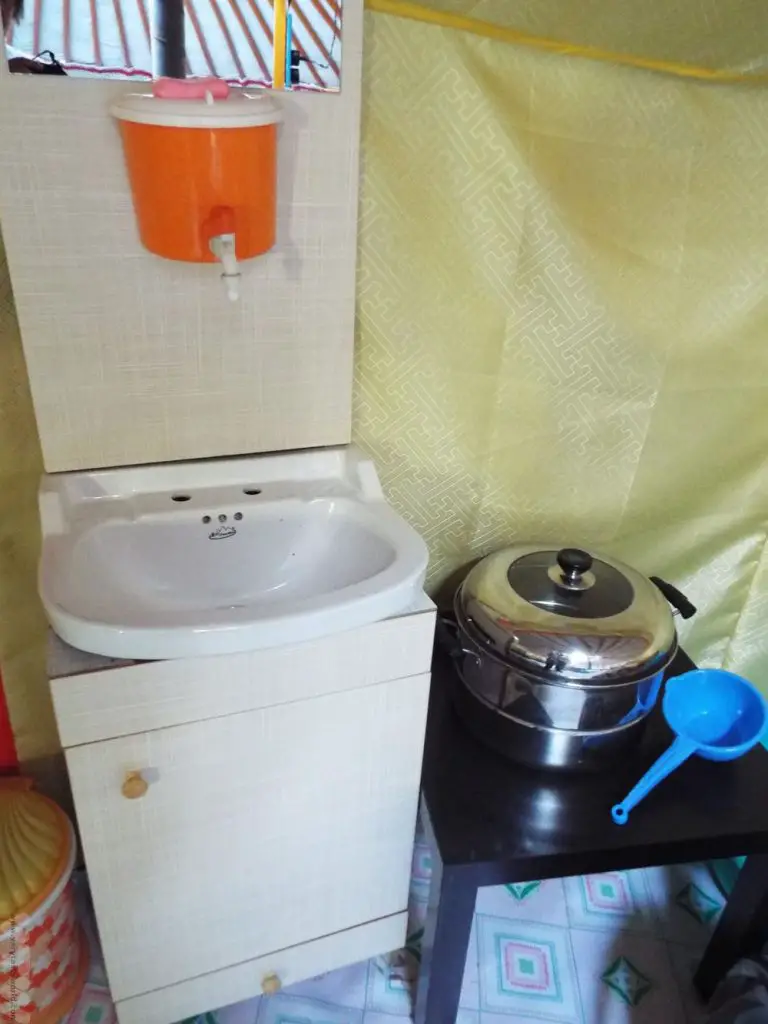
It’s not unfair to describe Mongolia’s climate as extreme with the vast temperature differences it experiences across the year. A landlocked country, with a continental climate, temperatures in the Gobi can range from -30⁰C in winter to 40⁰C in summer. It is also very dry, which helps mitigate the impact of these extreme temperatures, and usually has around 250 sunny days each year. We visited in early spring when temperatures were still largely sub-zero – around -15⁰C at night, rising to 0⁰C during the day. Curiously, because the humidity was so low these temperatures didn’t feel as cold as they should. Likewise, the dry summer heat would be more bearable than, say, the humid climes of south east Asia or central America. But, of course, you do still need to wash.
Sanitiser gel and wet wipes (environmentally sound, non-plastic ones) were useful. But with wet wipes you do need to dispose of them properly. Indeed, waste disposal is a problem in Mongolia, so we always carried our rubbish with us until we reached a public bin where we knew it would be collected. (Not all that is ours!)
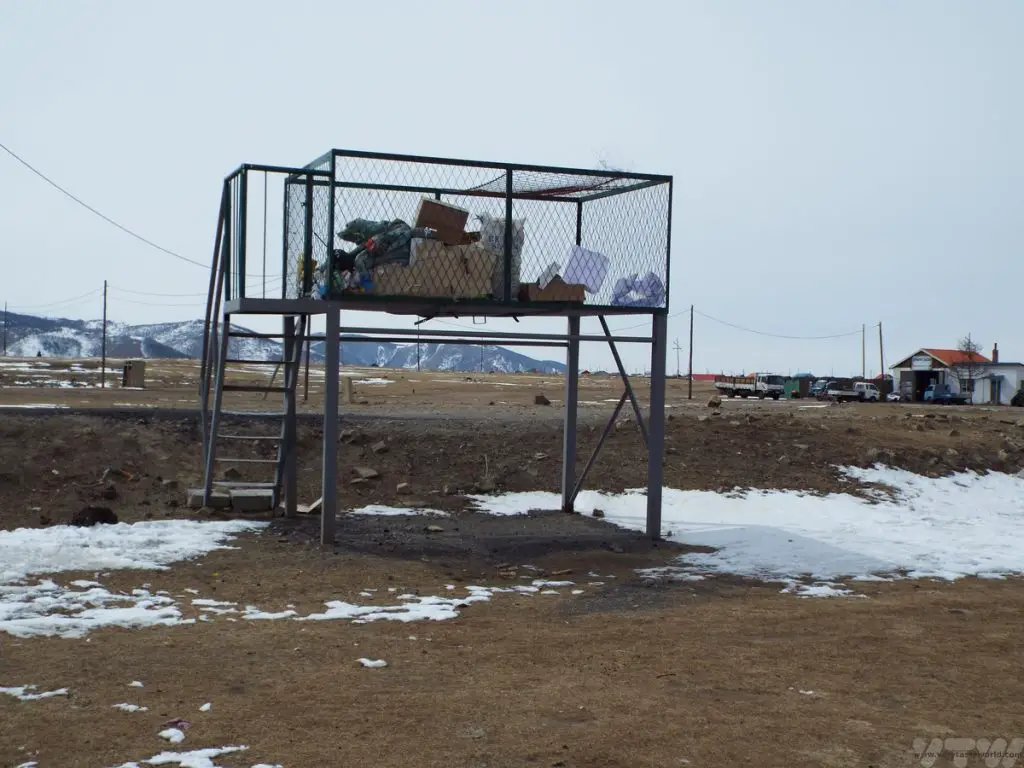
Where To Get A Shower In Mongolia
We had about three showers during our eleven day trip. Not washing and having greasy hair is surprisingly liberating – much more than we thought it would be. But how do you get a shower in Mongolia? You do what the locals do and go to a shower house. These are usually located in the larger towns.
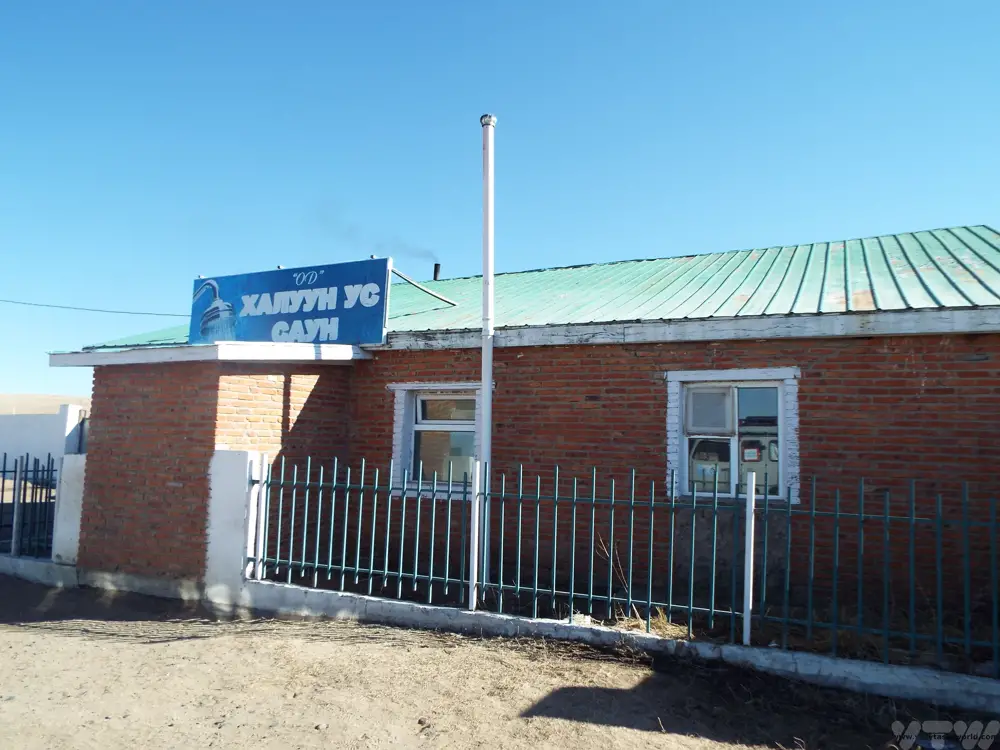
For a small fee you can use a shower room, with hot running water, either on a family/couple basis or hire an individual shower. There is a usually a changing room adjoining the shower room itself. We brought our own towels and toiletries (just soap/shampoo) with us. Because we were travelling at the end of winter we could walk straight in but during the summer months you may have to queue on a first-come, first served basis. They are basic but entirely functional.
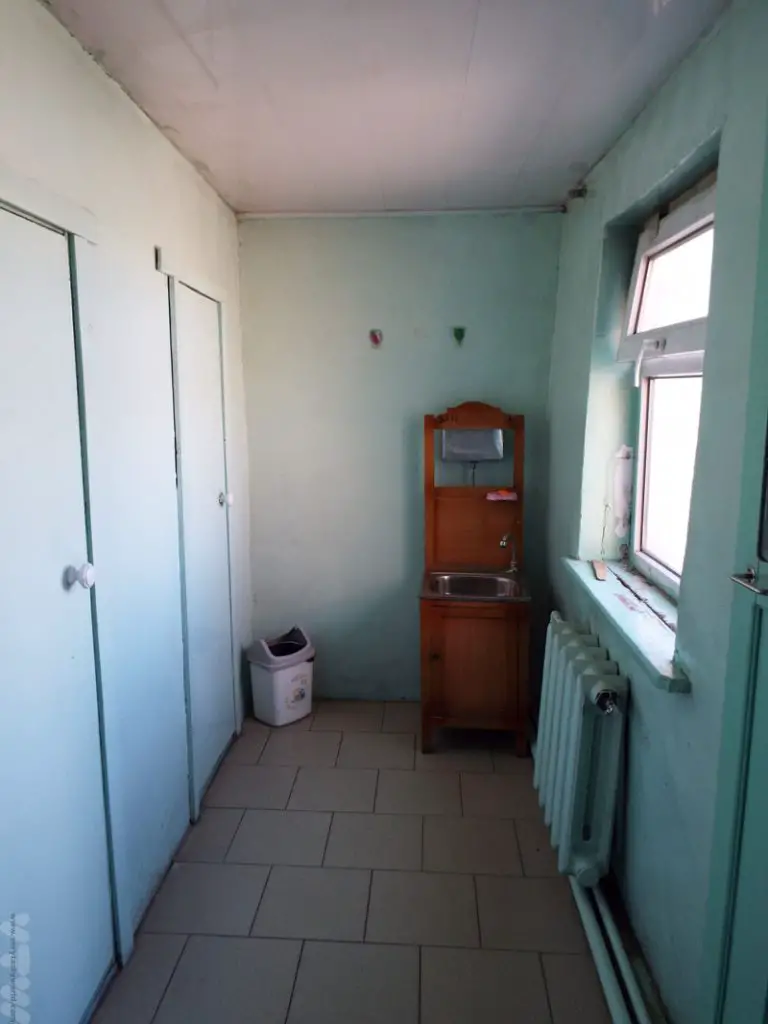
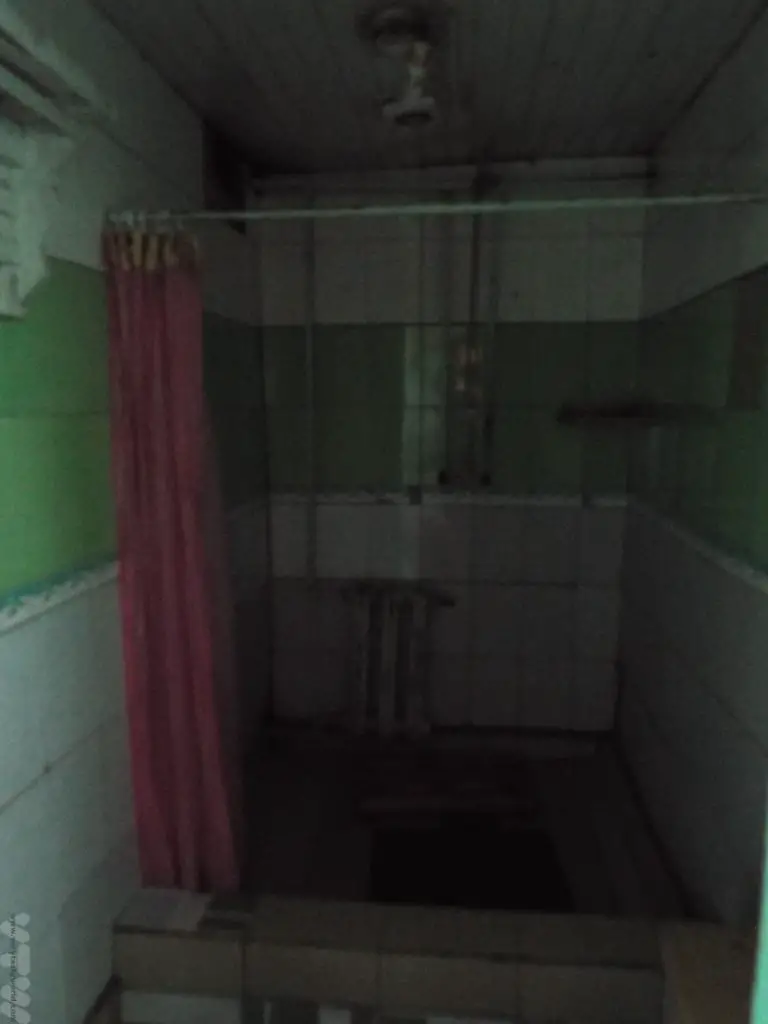
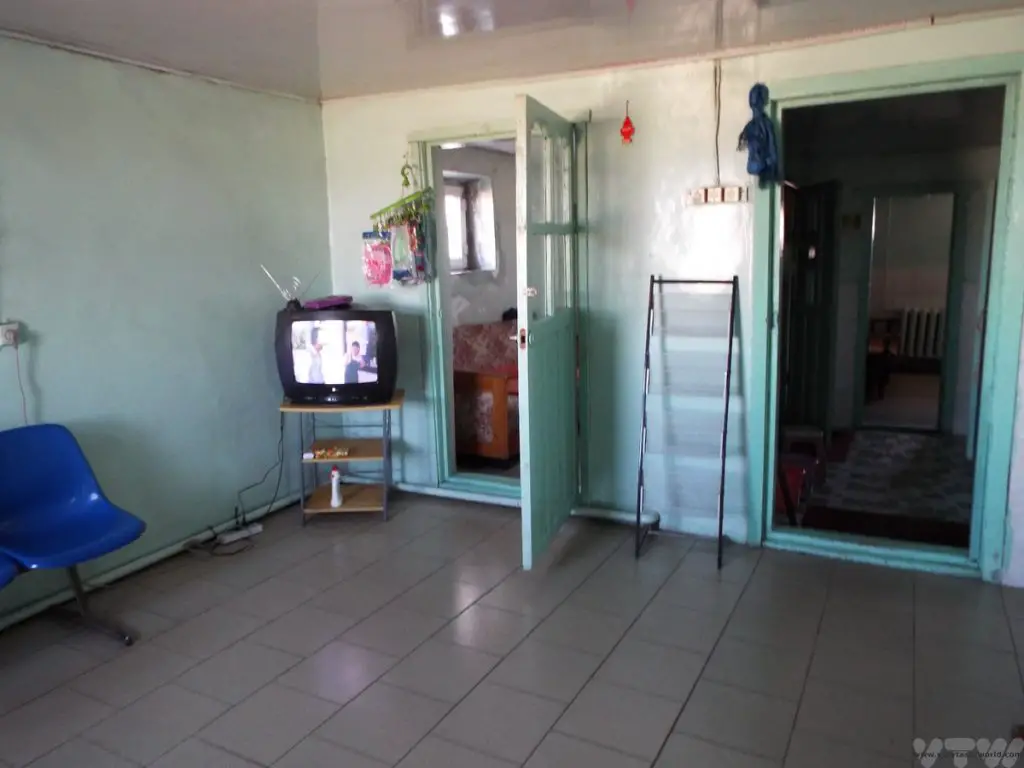
Packing Essentials For A Shower In Mongolia
For Shower Days
Travel towels – if you manage to get a shower in Mongolia microfibre are best. They dry you quickly and they dry quickly after they’ve dried you. If you’re staying in a ger, you can hang your towel from the rafters to let it dry. We found that our hosts often used the rafters for hanging out their washing, or as a coat stand. You can get a variety of travel towels that squish nicely into a bag.
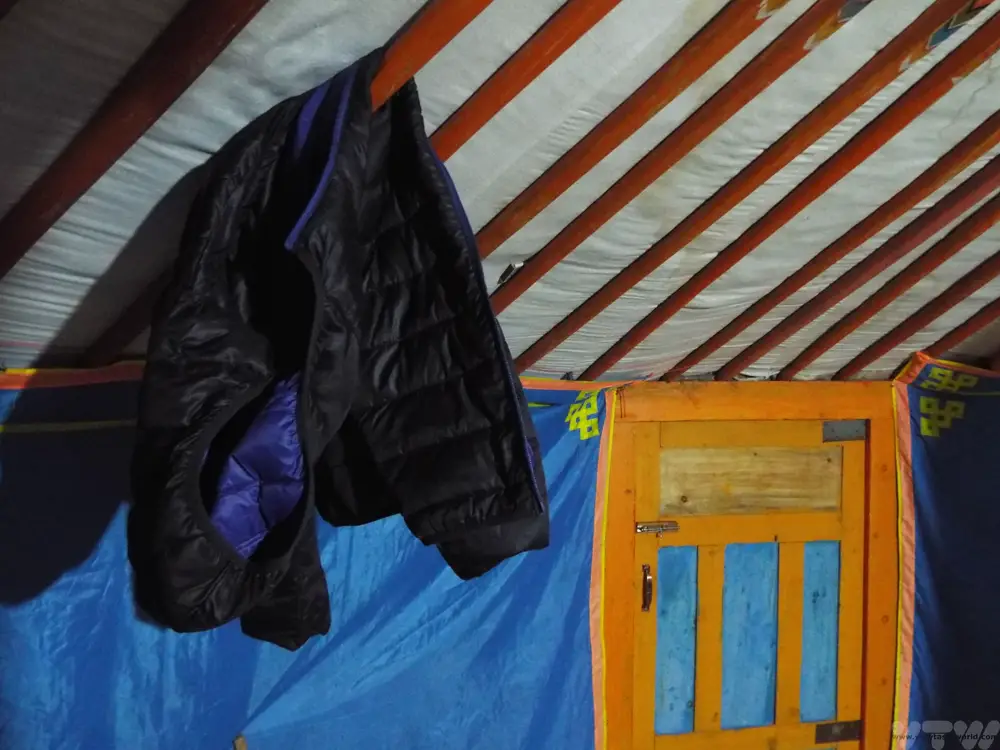
Basic toiletries – We tend to use products that combine body and hair wash. If you’re not sharing a shower room, you’ll need one for each person (or wait until your companion has finished washing).
For Non-Shower Days
Wet-wipes – useful for a ‘lick and a promise’ wipe wash. Try to get the biodegradable types. If you can’t, they need to be disposed of responsibly, never to the environment.
Hand sanitiser – once an essential item for travellers, now an essential item for the world, especially helpful for cleaning your hands after answering the call of nature.
General
Deodorant/anti-perspirant – you can get some types that last for 48 hours. Moisturiser and lip salve may also be useful – the cold weather can dry the skin somewhat. Suncream is also a good idea.
Shaving kit if you need/want it. Electric would be best. Make sure you have batteries, you are unlikely to be able to charge a shaver in a ger. Most of the time the only electricity available will be for a single light bulb, often run from a car battery.
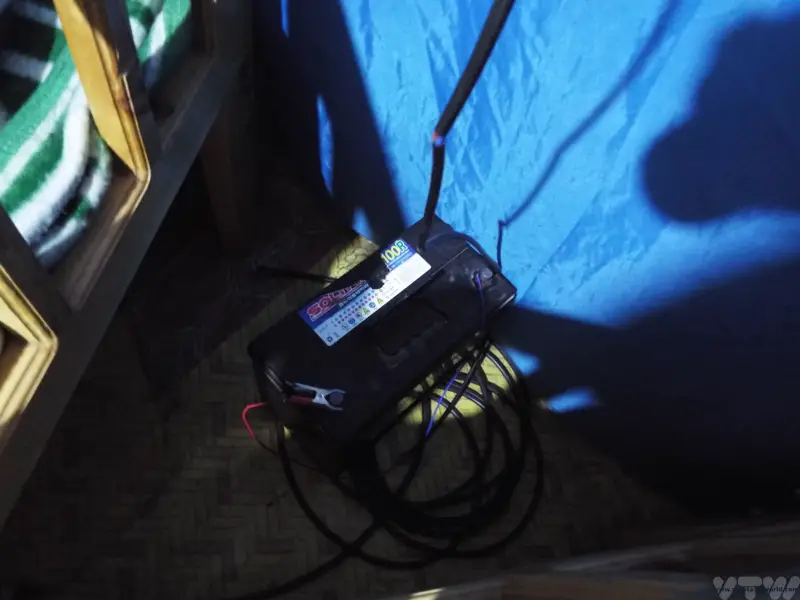
Head torches are really useful, particularly if you need to answer the call of nature during the night. The toilet is usually located a fair distance from the ger so you will need to be able to see where you are going. Using a torch that can be worn on your head means that you have both hands free. USB charged torches are cool but there won’t be a USB charging point in the desert, so you will need a battery operated one. It’s worth remembering to bring a few spare batteries as well.
And, don’t forget your toothbrush. Cleaning your teeth using the water supply in the ger is absolutely fine. The water from the wells is pure and we happily drank it without filtration.
There may be additional toiletries that you will need, in which case bring them along. We tend to bring only as much as we expect to use so rather than take a big bottle, we estimate the required amount an decant it into smaller bottles.
There are other products, such as dry shampoos which will wash your hair without water, that you can investigate if you really can’t go without a hair wash. We didn’t bother. Things like towels are entirely necessary but tend to bulk out your luggage and we wanted to travel as light as possible.
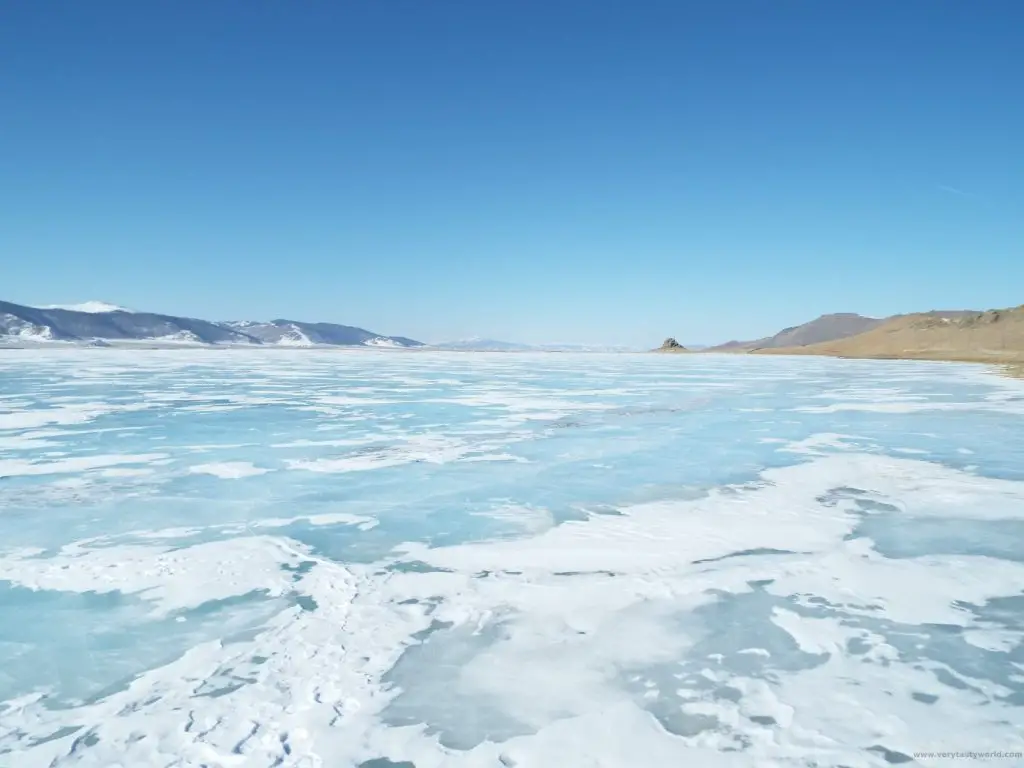
In terms of clothing to pack, we found that layering was a really good idea. You will want to wear socks in bed, along with thermal pyjamas, and as many duvets and blankets as can be squeezed into the van.
It was difficult – initially – to leave our comfort zone and get used to very basic toilets as well as go without washing, but actually we surprised ourselves at how quickly we just got stuck in. We had a remarkable – and hugely enjoyable – adventure.
Related Posts You May Enjoy

A Mongolian Yurt – Anatomy of a Ger
One of the lovely things about travelling to Mongolia is staying in gers, either with families who were kind enough to share their homes with us or at specially designed tourist camps. A ger (also known in Western countries as a Mongolian yurt, although ger is the correct Mongolian term) are traditional round tents used as dwellings throughout Mongolia. The amazing thing about them is that they can be taken down and put up within a couple of hours. The construction uses no nails or fixings – the wooden poles interlock and remain sturdy and solid.
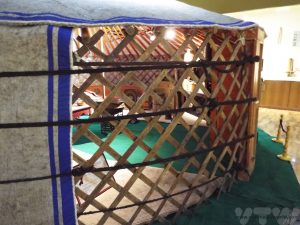
The national museum of Mongolia in Ulaanbaatar helpfully has a model to show a ger’s construction.
The door of the ger always faces south. You have to remember to duck when entering – it’s probably a rare visitor who doesn’t bash their head at least once when staying in gers!
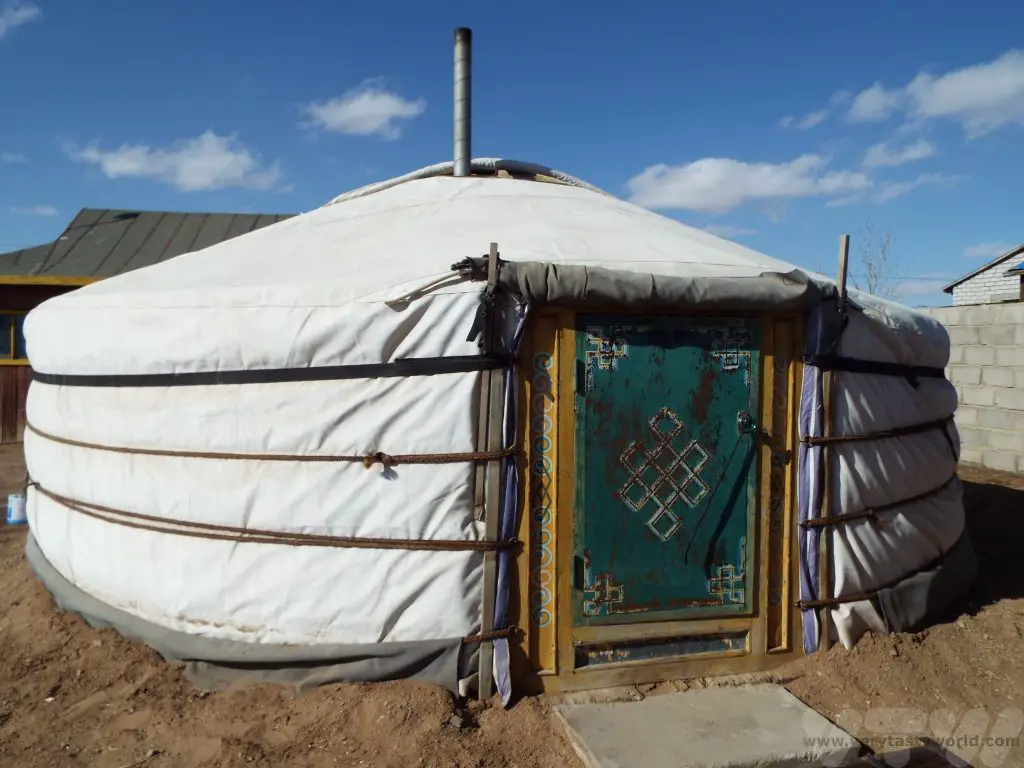
Most locals don’t knock before entering the ger and shoes remain on. Whenever we visited a family we were invited to join them and were introduced to all the family members over a cup of milk tea or sometimes a shot of vodka. We were always welcomed warmly with big smiles at every place we visited.
In winter, temperatures outside can drop to -30 degC. We visited in spring so night-time temperatures were a relatively balmy -15 degC – which was still very, very cold! The fuel used by the family varies depending on what is available – coal burns more slowly than wood which burns more slowly than dung.
The Heart Of The Home
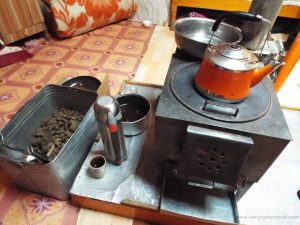
The centre of the ger is the stove. It really is the heart of the home, used for both cooking and heating. You need to be aware of the chimney as it’s located in the centre of the ger and will get very hot.
To the left of the door is the kitchen area. Shelves contain pots and pans as well as cooking utensils. Many of the pots are specifically designed to be used directly on the stove and can be used interchangeably. It’s a very efficient system.
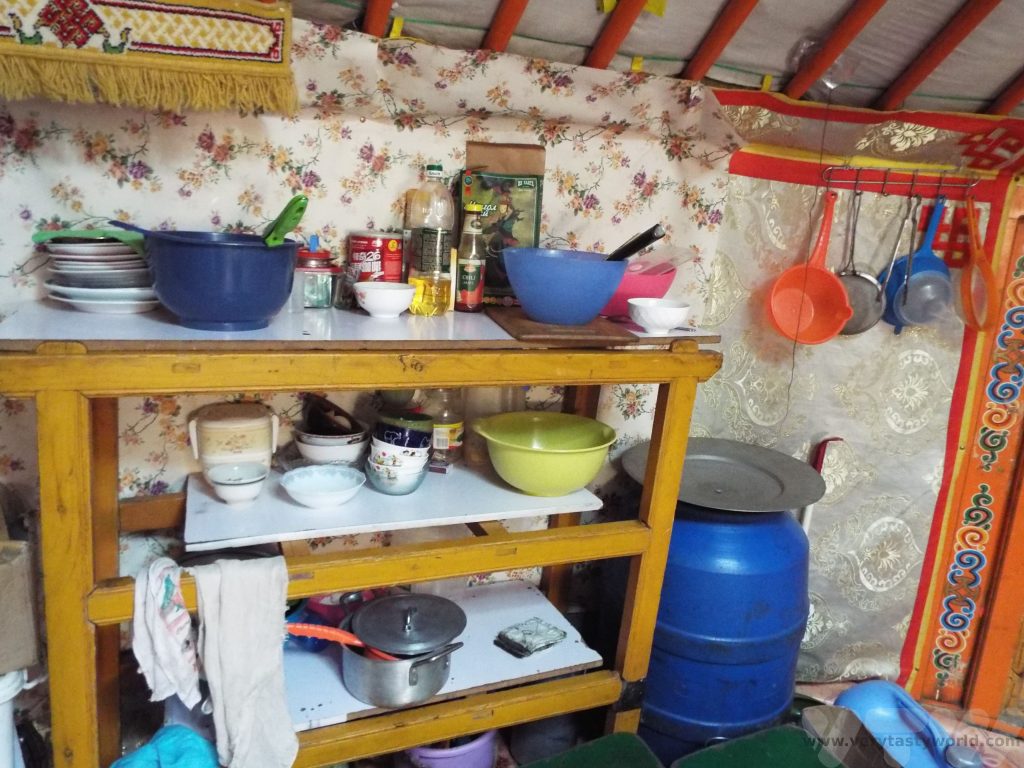
The blue barrel contains water, drawn from the nearest well.
To the right of the door is the washing area. There is no running water available but the little plastic vessel can be filled from the main water barrel and the tap opened.
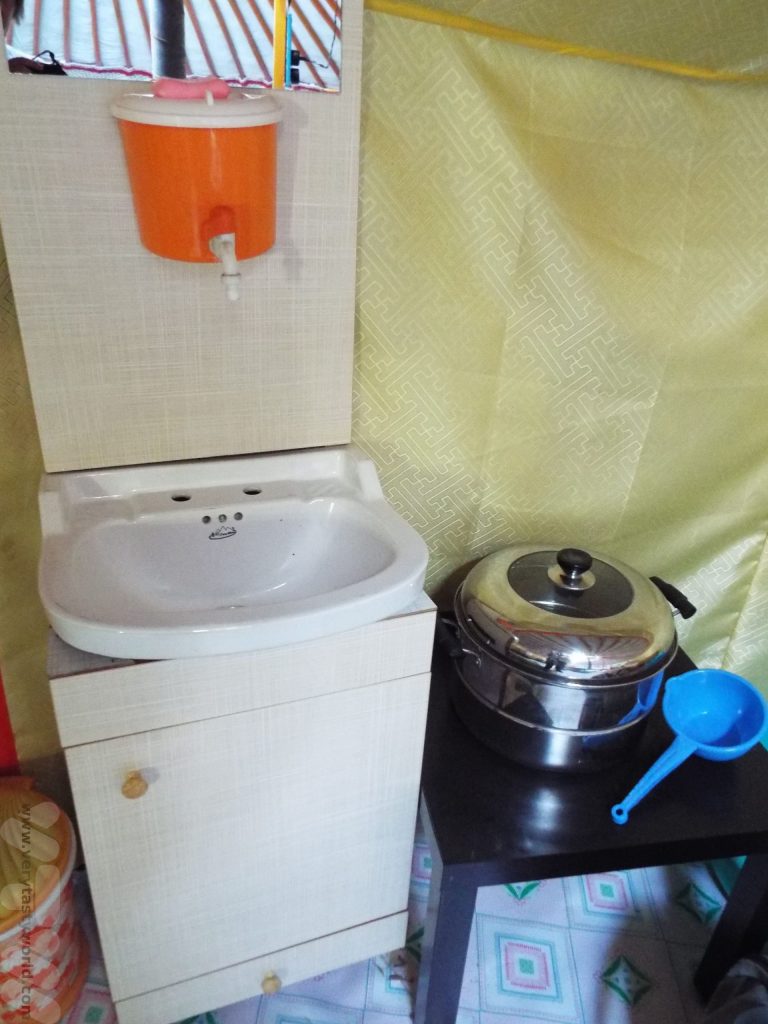
Be careful not to waste water though. If you want water in the Gobi desert you have to go to the nearest well, which can be several kilometres away.
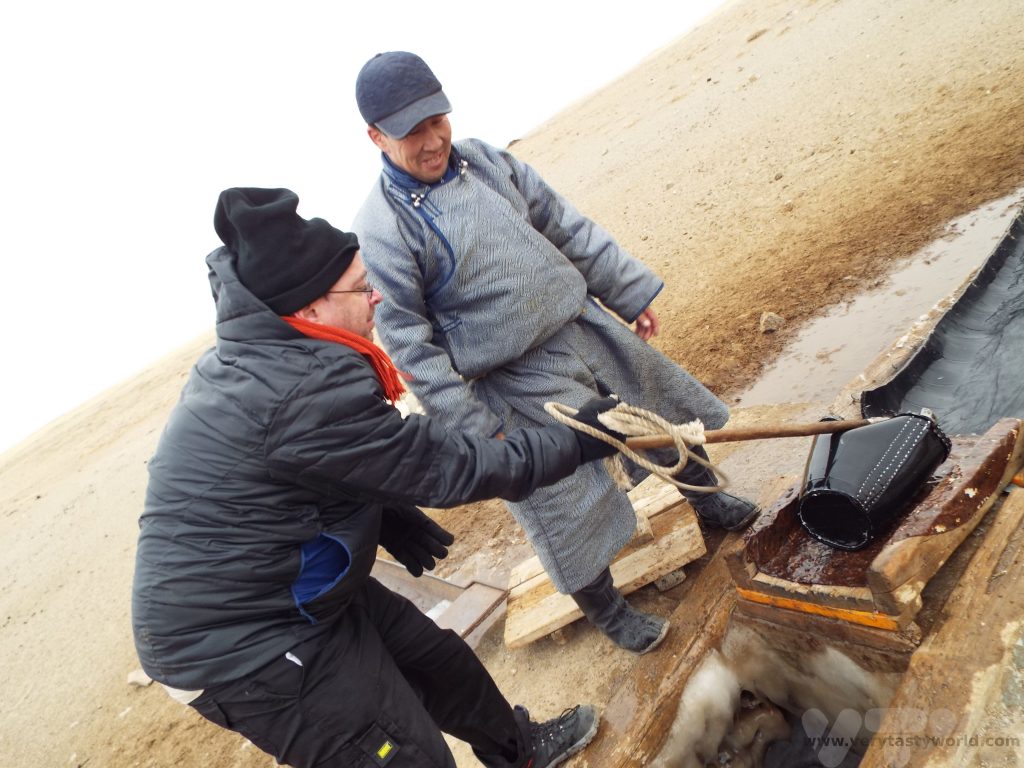
The water is pure and can be drunk directly with no filtration needed. It tastes good.
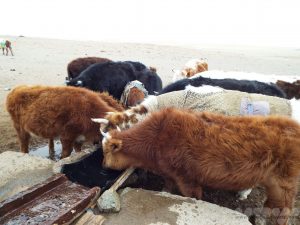
This well was used not only to provide water for the family, the local cows were also waiting for a drink.
Sleeping In A Mongolian Yurt – A Ger
Beds and storage areas line the circumference of the ger. There will be a low table with stools next to the stove. Beds double as a seating area – it’s perfectly fine to sit on someone’s bed. Blankets and clothes can be stored underneath. You can hang your coat or dry any laundry by hanging clothes in the rafters. Family homes also had furniture such as chests of drawers and dressing tables.
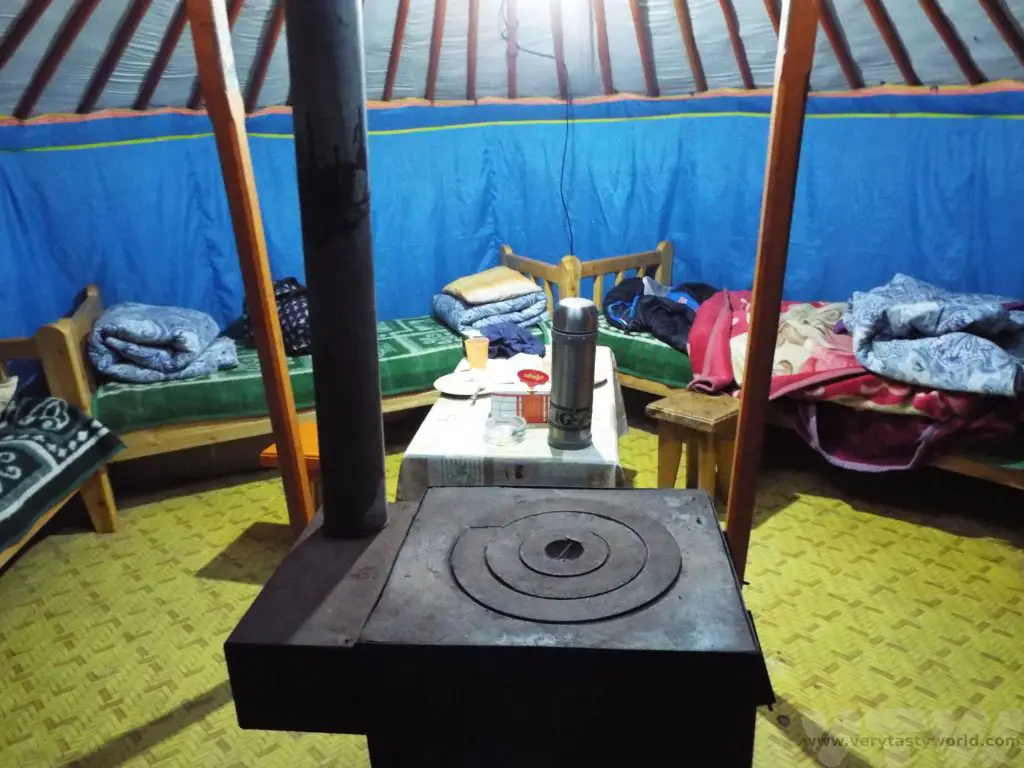
Of course there is a need for a toilet. The facilities are usually a basic long drop loo, that is, a hole in the ground with a couple of planks across it to stand on, located some 50m from the ger. When answering the call of nature you are surrounded by, well, nature.
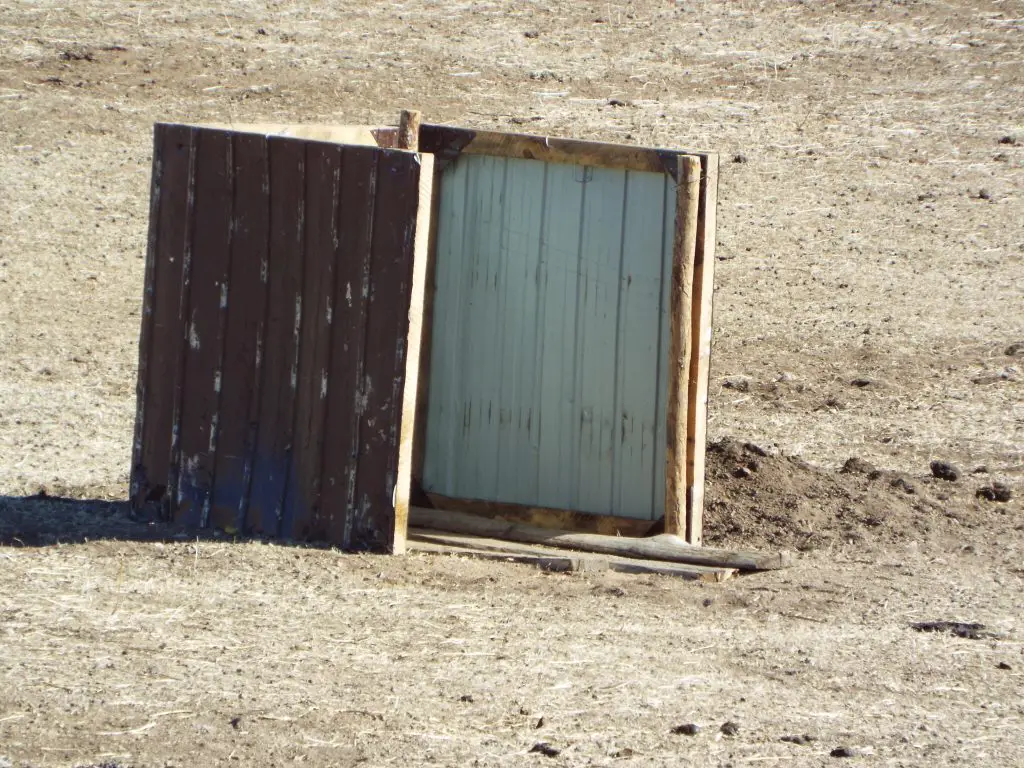
If you want a shower you will have to go to the local town. There are shower houses available for locals to use. We had just three showers in eleven days and were surprised to discover that it’s quite liberating having greasy hair and simply not feeling the need to shower every day. We’d have a quick wash down with wet-wipes on non-shower days (making sure to dispose of them properly). The climate in Mongolia, especially in the Gobi, is very dry – so the heat of the summer and cold of the winter are mitigated by the lack of humidity.
In springtime, while daytime temperatures can be quite mild, it drops significantly at night. The ger will be toasty warm while the stove is lit, but it will go out and then it’s time to bundle up – thermals, blankets, sleeping bags – just pile them on.
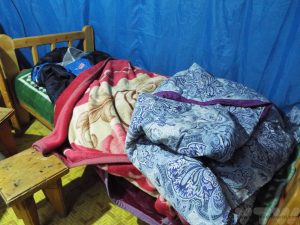
The host family will come in in the morning and start up the fire. We were pretty incompetent at getting the stove going at first but during the course our stay we eventually developed a technique that could both start and maintain the fire and we could officially deem ourselves the ‘fire-starters.’ Nomadic families make use of the dung produced by their many animals. It is dried out and used for fuel. It burns quite quickly so you need to keep an eye on the stove and top up whenever necessary.
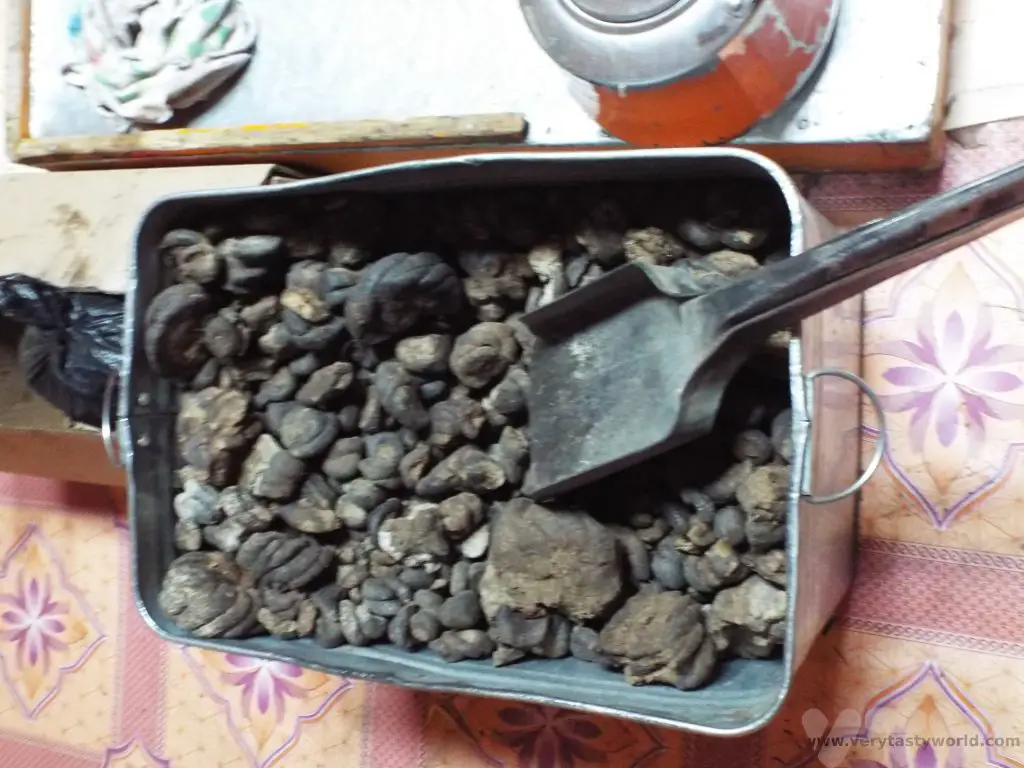
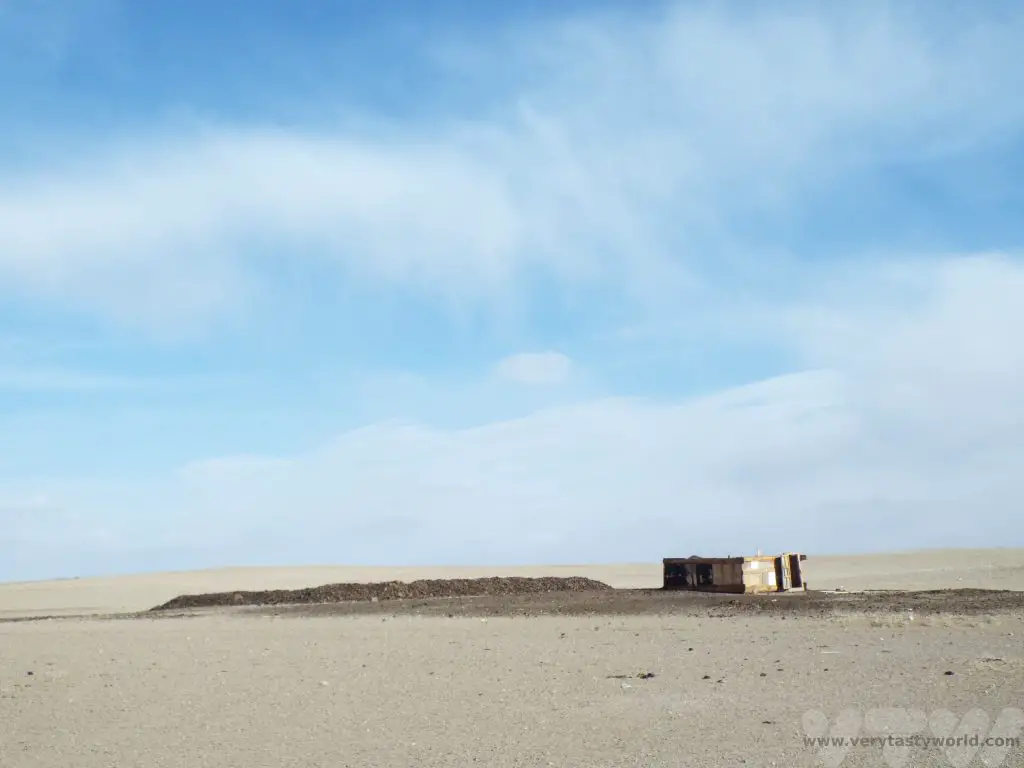
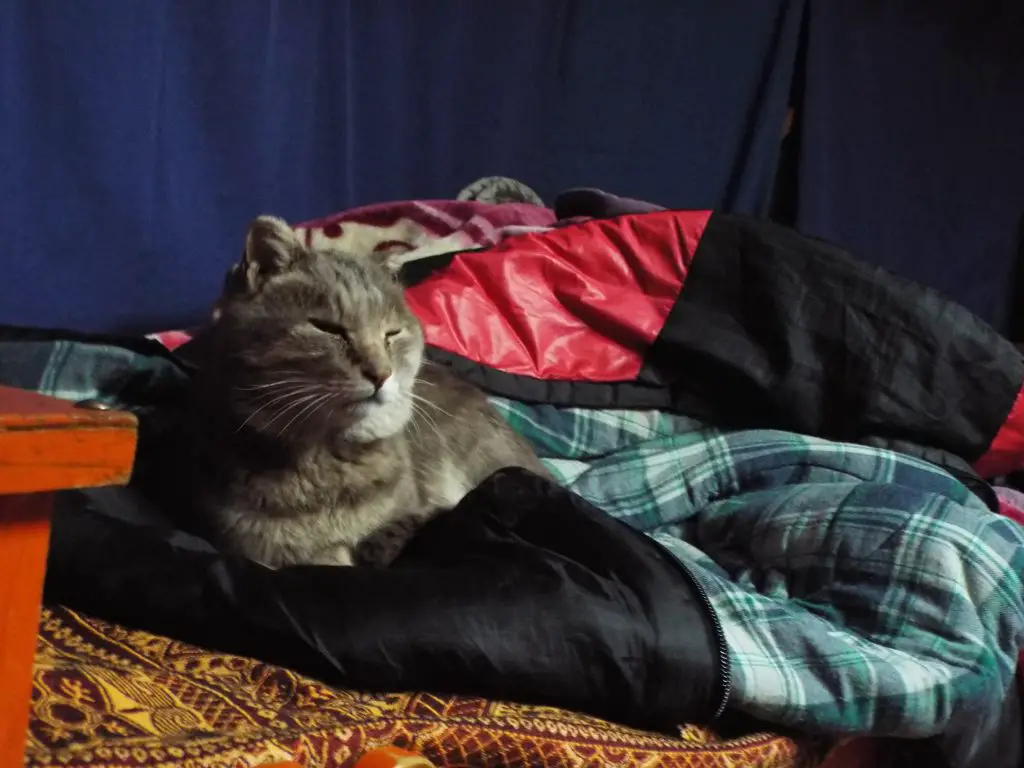
Cats are working animals in Mongolia and all our hosts found it hilarious that our little cat goes into a cattery – we described it as a ‘cat hotel’ – when we are travelling. If a local cat gets into the ger be warned, it will instantly take advantage of both the warmth and softy tourists within and will almost certainly leap onto your sleeping gear to snuggle up and look smug. You’ll be lucky to get your bed back.
